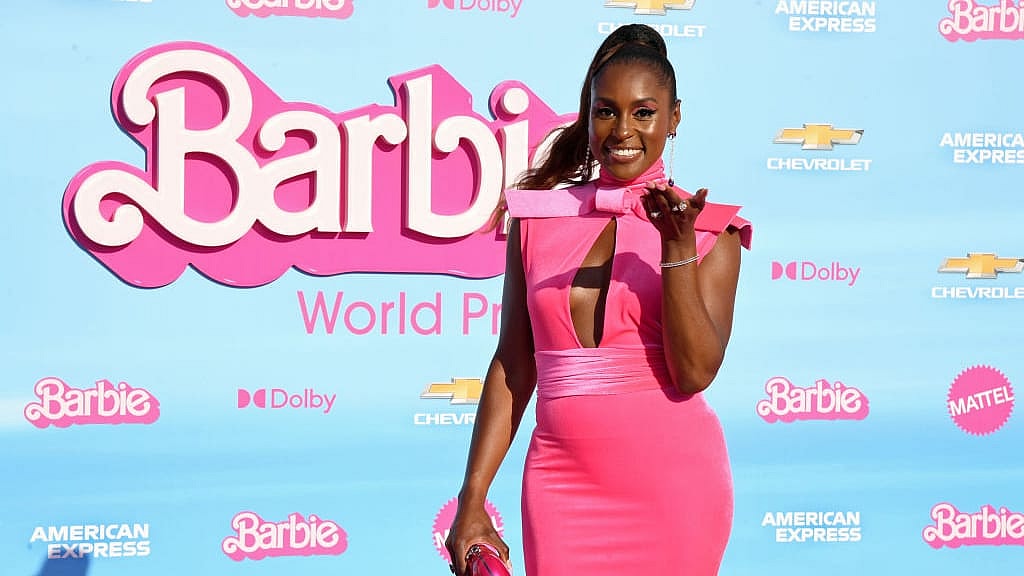It’s been 44 years since toy maker Mattel introduced the first official Black Barbie to the market. As filmmaker Lagueria Davis illustrates in Netflix’s “Black Barbie: A Documentary,” the doll has had quite the journey since then.
Davis was inspired to create the film after learning her aunt, Beulah Mae Mitchell, was one of Mattel’s first Black employees and among the first to suggest a Black version of the iconic doll originally devised by Ruth Handler.
“We’re giving Black Barbie, my aunt Beulah, Kitty Black Perkins (the originator of Black Barbie), Stacey [McBride-Irby], their flowers, their credit,” Davis told Rolling Stone while discussing the film.
Doubling down on a point she makes in the film, Davis said she also wanted to make “Black Barbie the hero of her own story.”
Mitchell, who joined Mattel as a jack-in-the-box assembler in 1955 before becoming a receptionist for the company, said Handler frequently visited the assembly line for workers’ opinions and suggestions on toys. In the 1960s, Mitchell joined a chorus of Black employees who asked Handler to devise a Black version of Barbie. Initially, Handler was reluctant. The doll wasn’t greenlit until Perkins was hired as a Barbie designer in 1976. Black Barbie hit the market in 1980, and Perkins explains in the film that the doll was designed to be reminiscent of Diana Ross.
“There was a need for the little Black girl to really have something she could play with that looked like her,” Perkins says in the documentary. “I wanted her to reflect the total look of a Black woman.”
While speaking to Rolling Stone she added, “I wanted her to be something that was reality-based, and I think we achieved that.”
Recommended Stories
Before Black Barbie, the original blonde and blue-eyed doll had Black friends. One of them, Christie, was dubbed Barbie’s pal and babysitter. Given that Christie hit the market in the late 1950s and early ‘60s — when many Black women were domestic workers for white families — the juxtaposition was clear. In the film, Perkins recalls explaining why Black dolls needed to simply be Barbie’s friends and not also her hired help.
After Perkins stepped down in 2003, successor Stacey McBride-Irby drove major releases for Black Barbie. Two projects of note included the S.I.S dolls, (“So-In-Style”) and Black Barbie’s 30th-anniversary special edition collectible doll.
In the years since McBride-Irby left the company in 2011, Mattel’s most famous doll has become more diverse. In 2019, the company announced a line of Barbies that would include wheelchairs, removable prosthetic legs, and different body types. In 2020, the toymaker released dolls with vitiligo and no hair in 2020, and a Barbie with Down syndrome in 2023. Through the Inspiring Women collectible series, a number of historical and cultural icons have been immortalized as Barbies, including Ida B. Wells, Rosa Parks, Tina Turner, Misty Copeland, Madam C.J. Walker, and Shonda Rhimes, one of the documentary’s executive producers.
Despite Mattel’s strides to improve diversity, Davis’ film dares to ask if the company still has work to do. During the film, child and adolescent studies professor Amirah Saafir recreates the controversial Clark Doll Test and discovers that kids today, while nuanced, still largely associate the white doll with the “real Barbie.”
The documentary was made and completed before Greta Gerwig’s blockbuster “Barbie” movie hit theaters last summer. But Gerwig’s film, with its white, blue-eyed and blonde-haired “classic” Barbie, inadvertently adds to Davis’ larger point — a point Mattel might actually understand.
Notably, the designer for the 40th anniversary collectible Black Barbie was white. Since the blockbuster’s release, Mattel announced that Perkins will return to help design a 45th anniversary doll. In addition, the documentary includes Mattel mentioning a Future Leaders In Play program that gives internships to Black undergraduate students. Mattel has provided other opportunities for increased diversity, too, like working with the Black Student Union of OTIS College of Arts and Design.
Speaking to Today.com about the documentary, Perkins said she never expected Mattel’s efforts to be more inclusive after she retired in 2003.
She added, “I do know that Black Barbie was really responsible for opening that door.”










